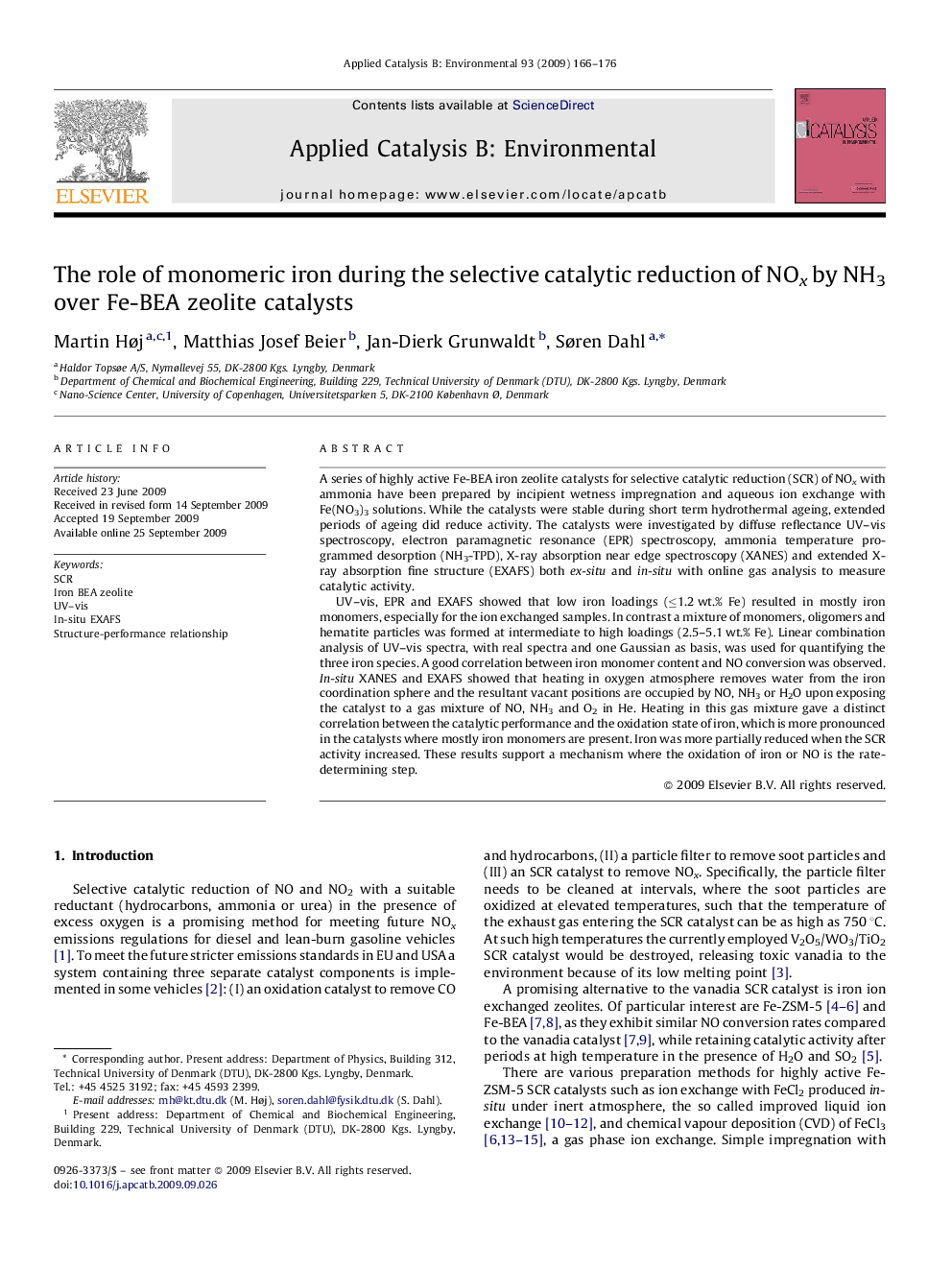| کد مقاله | کد نشریه | سال انتشار | مقاله انگلیسی | نسخه تمام متن |
|---|---|---|---|---|
| 47361 | 46469 | 2009 | 11 صفحه PDF | دانلود رایگان |

A series of highly active Fe-BEA iron zeolite catalysts for selective catalytic reduction (SCR) of NOx with ammonia have been prepared by incipient wetness impregnation and aqueous ion exchange with Fe(NO3)3 solutions. While the catalysts were stable during short term hydrothermal ageing, extended periods of ageing did reduce activity. The catalysts were investigated by diffuse reflectance UV–vis spectroscopy, electron paramagnetic resonance (EPR) spectroscopy, ammonia temperature programmed desorption (NH3-TPD), X-ray absorption near edge spectroscopy (XANES) and extended X-ray absorption fine structure (EXAFS) both ex-situ and in-situ with online gas analysis to measure catalytic activity.UV–vis, EPR and EXAFS showed that low iron loadings (≤1.2 wt.% Fe) resulted in mostly iron monomers, especially for the ion exchanged samples. In contrast a mixture of monomers, oligomers and hematite particles was formed at intermediate to high loadings (2.5–5.1 wt.% Fe). Linear combination analysis of UV–vis spectra, with real spectra and one Gaussian as basis, was used for quantifying the three iron species. A good correlation between iron monomer content and NO conversion was observed. In-situ XANES and EXAFS showed that heating in oxygen atmosphere removes water from the iron coordination sphere and the resultant vacant positions are occupied by NO, NH3 or H2O upon exposing the catalyst to a gas mixture of NO, NH3 and O2 in He. Heating in this gas mixture gave a distinct correlation between the catalytic performance and the oxidation state of iron, which is more pronounced in the catalysts where mostly iron monomers are present. Iron was more partially reduced when the SCR activity increased. These results support a mechanism where the oxidation of iron or NO is the rate-determining step.
Journal: Applied Catalysis B: Environmental - Volume 93, Issues 1–2, 25 November 2009, Pages 166–176